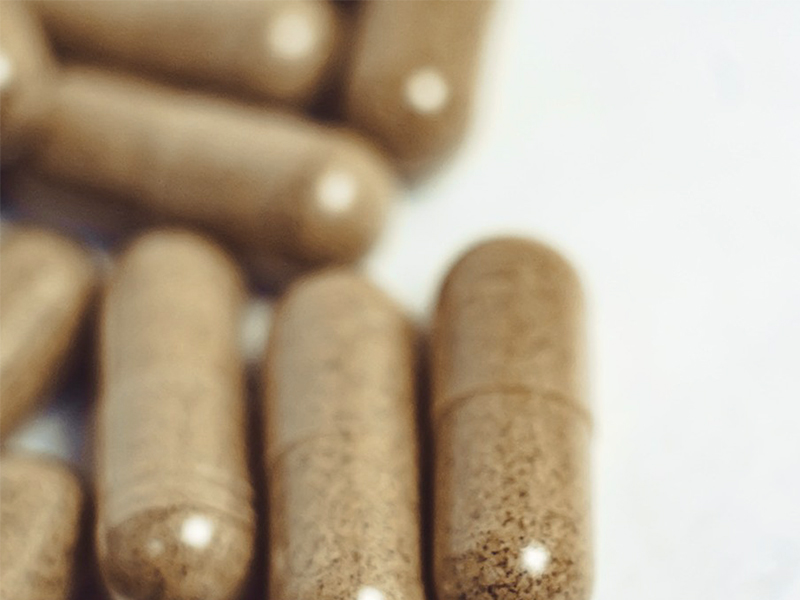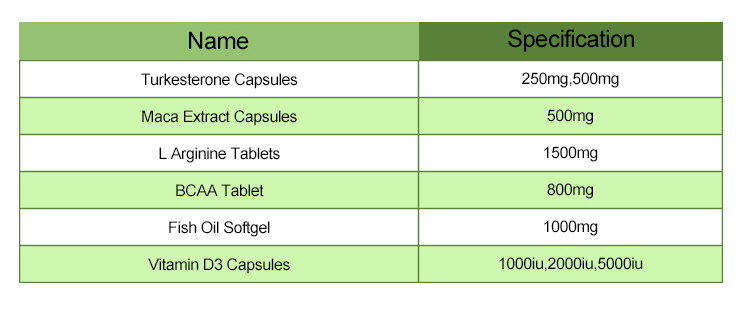Maca root capsules are a popular dietary supplement derived from the root of the maca plant (Lepidium meyenii), which is native to the Andes mountains of Peru. Maca root has been traditionally used for its purported health benefits, including increasing energy, stamina, libido, and fertility, although scientific evidence supporting these claims is limited.
Chemical Composition:
The chemical composition of maca root can vary depending on factors such as the variety of maca, growing conditions, and processing methods. However, maca root typically contains various bioactive compounds, including:
1.Macamides and Macaenes: These are unique compounds found in maca root and are considered to be responsible for many of its potential health benefits. Macamides and macaenes are fatty acid derivatives with reported adaptogenic and aphrodisiac properties.
2.Glucosinolates: Maca root contains glucosinolates, which are sulfur-containing compounds found in cruciferous vegetables. Glucosinolates have antioxidant properties and may contribute to the health benefits of maca.
3.Alkaloids: Maca root contains alkaloids, including macaridine and maca alkaloids, which may have various physiological effects.

4.Sterols: Sterols, such as sitosterol, campesterol, and brassicasterol, are present in maca root and may contribute to its health-promoting properties.
5.Protein: Maca root is a good source of protein, containing essential amino acids necessary for various physiological functions.
6.Carbohydrates: Maca root contains carbohydrates, including dietary fiber, which can contribute to its nutritional value.
7.Minerals: Maca root is rich in minerals such as calcium, potassium, magnesium, iron, and zinc, which are essential for overall health and well-being.
Physical Properties of Maca Root Capsules:
Maca root capsules typically contain powdered maca root enclosed in gelatin or vegetarian capsules. The physical properties of maca root capsules can vary depending on the formulation and manufacturing process. However, some common physical properties include:
1.Color: Maca root capsules may vary in color depending on the color of the powdered maca root used. Maca root powder can range from off-white to beige or light brown.
2.Texture: The texture of maca root capsules is typically powdery, reflecting the finely ground maca root powder inside the capsules.
3.Size and Shape: Maca root capsules come in various sizes and shapes depending on the manufacturer and dosage requirements. They are usually cylindrical or oval-shaped and come in different capsule sizes (e.g., 00, 0, 1, 2, 3, 4).
4.Odor and Taste: Maca root capsules may have a characteristic earthy odor and flavor due to the natural compounds present in maca root. Some people may find the taste and odor of maca root to be slightly bitter or nutty.

5.Solubility: Maca root capsules are designed to be taken orally with water. The powdered maca root inside the capsules is water-soluble, allowing for easy ingestion.
6.Packaging: Maca root capsules are typically packaged in opaque containers to protect them from light and moisture, which can degrade the quality of the product over time. The packaging may include information about the dosage, ingredients, and storage instructions.
It’s important to note that while maca root is generally considered safe for most people when consumed in appropriate amounts, individuals with certain medical conditions or those taking medications should consult with a healthcare professional before using maca root capsules or any other dietary supplement. Additionally, quality and purity can vary among maca root products, so it’s essential to choose reputable brands and products from trusted sources.
